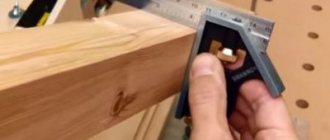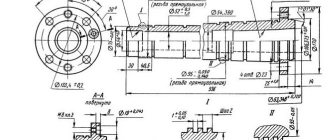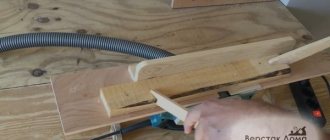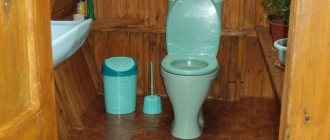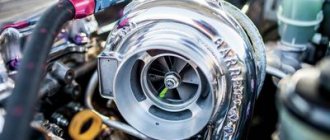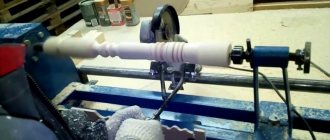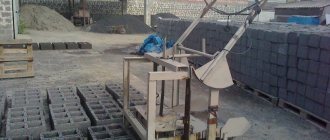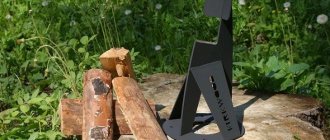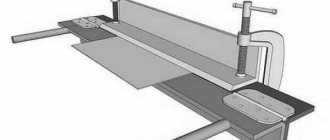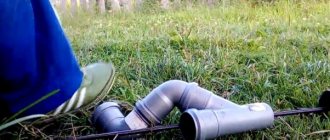Types of forklifts
If you want to find out how to make a loader for the MTZ rear linkage with your own hands, it is advisable to become more familiar with the types of this type of equipment used on the farm. Loaders of various types can significantly automate the loading/unloading processes, which makes them an effective tool when frequent transportation of goods is required.
To handle cargo, a wide range of attachments can be used, including:
- a bucket that acts as a front loader when working with bulk materials or soils;
- forks used when working with single objects;
- jaw-type gripper - used in logging, as well as for working with bulk types of cargo;
- haystack - has a limited scope of application, suitable for loading hay;
- a manipulator installation capable of moving large single objects;
- KUN, which makes it possible to work with numerous replaceable elements;
- a cargo boom with a telescopic mechanism is an indispensable tool when it is necessary to move objects to an impressive height.
When figuring out how to make a rear-mounted loader, it should be mentioned that such devices also differ in the type of drive: mechanical, electrical and hydraulic models. Taking into account the design features of MTZ tractor equipment, as well as the operating principle of this kind of manipulators, it should be noted that manipulators, as well as buckets, are most often used for the rear linkage.
MTZ front and rear mounted loaders: types and installation
Mounted loaders are multifunctional devices used for mechanized movement and transportation of piece and bulk cargo, as well as the development and transfer of soils of the first and second categories.
Loading devices produced in various modifications are used in agricultural production, industry, road, industrial and housing construction, municipal and forestry.
Loader Metal Fakh on the front linkage of the MTZ tractor
Inferior to specialized excavator and loading complexes in terms of productivity, mounted loading devices are significantly superior to them in terms of seasonal loading and functionality.
Classification of mounted loaders
Types of loaders based on MTZ
Depending on the type of working parts and the specifics of the operations performed, loaders are divided into:
- Bucket loading devices equipped with a bucket articulated with a boom, used for developing and moving soil and loading operations with bulk cargo.
- Tractor quick-release hydraulic front loaders with a two-level hydraulic frame of the KUHN lifting device. KUN is one of the most common types of mounted tractor loading equipment, which received its common name from the successful model of the universal hay hauler, which is aggregated with BELARUS tractor equipment. Equipped with various replaceable working elements, KUNs, which differ from other types of loaders in the speed of changing working elements and dismantling the entire mechanism, are used for developing and moving soil, operations with agricultural products - straw rolls and ricks, haylage, silage, manure, fertilizers, and performing warehouse work with packed and unpacked cargo, snow removal, etc.
- Equipped with lifting forks that carry out picking up, transporting and unloading piece goods - forklifts.
- Jaw loaders with working bodies in the form of massive metal jaws that close when gripping are used to move long loads in logging and when performing warehouse operations with bulk substances.
- Equipped with a grabber mounted on a lifting frame, consisting of a rake and cap grating, for picking up and placing hay.
- Rake grids designed for the selection and transportation of light haylage, which are loaders with working elements made of long fingers. Unlike drag rakes, rake grates select light haylage, lifting it up and moving it in front of you.
- Hydraulic manipulator loaders are designed for lifting and moving solid and packaged cargo in warehouse and field conditions, using a two-part crane device with rigging that rotates around its axis as a working mechanism.
Among the mounted loading devices, telescopic loaders equipped with a telescopic load boom with variable reach are also distinguished. Models of such loading mechanisms, with dimensions comparable to other types of loading equipment, have a large coverage area.
According to the type of drive of the working elements, loading mechanisms are divided into electromechanical devices that use the booms of the working element, mechanical loading units and hydraulic loaders equipped with hydraulic cylinders.
Using tractor attachments to install loading equipment
Depending on the specific conditions of work, loading mechanisms aggregated with tractor equipment can be installed on both the front and rear linkages of base machines.
Thus, hydraulic manipulators are often installed on the rear linkage along with the trailed or semi-trailer transport platforms they serve, and haystacks, rake bars and bucket loading mechanisms are installed on the front linkage.
The choice of installation option also depends on the technical capabilities and operational characteristics of the base tractor and their compliance with the parameters of the loading mechanisms.
Design and principle of operation of mounted loading bucket and fork devices and KUNS
The main structural elements of mounted loaders are:
- Sliding lifting mechanism with a carriage (forklifts) or a working boom with universal or special mechanisms for fastening working parts (bucket loading devices);
- Working elements - pick-up fork, articulated buckets of various types, jaw grips, rake grids, soil and snow dumps, rigging equipment, etc.
A special feature of the KUN design is the ability to quickly install and dismantle loaders of this type and their replaceable working parts without the use of additional equipment.
Loader manufacturing procedure
A homemade loader for the rear linkage of a tractor is constructed in several main stages, the first of which is the preparation of the necessary materials, tools and drawings. Their list may vary, depending on the type, as well as the selected model of the loader.
Materials for work
The most popular loader option for mounting on the rear of a tractor is the boom arm. Having carefully studied the drawings of such a device, we can conclude that to make it, the master will need the following elements:
- metal profiles and sheets, the dimensional parameters of which depend on the dimensions of the installation and the expected load;
- fasteners;
- hinges;
- three hydraulic cylinders that can be removed from old mechanisms.
During the assembly process, the master will need a standard set of tools, an angle grinder, and a welding machine.
Procedure
In order to successfully produce this kind of device, you will need to adhere to the simplest algorithm of actions. First of all, it is necessary to construct a rectangular base from profiled pipes or using corners.
Next you will need to use the following instructions:
- Place another rectangle in the center of the base, which will be used to mount the hydraulic cylinder. For this purpose, a spacer with 4 hinges will need to be secured on top of the element to secure the cylinder and related mechanisms.
- Make an arrow using 2 profiled blanks connected to each other at an angle of 30 degrees, and also fix its end on the base of the element, not far from the hydraulic cylinder.
- Mount a cylindrical hinge in the middle of this element, as well as movably fixed parts of the boom. Between them there should be small cylinders, as well as a crossbar for attaching the bucket.
- Make a bucket with stiffening ribs from sheet metal and pipes and secure it to the boom.
It should be noted that the impressive length of the boom can lead to the tractor tipping over when working with large loads. To avoid such problems, it is necessary to mount a special counterweight in the front part of the tractor, which must match the mass of the manipulator.
Instead of a bucket, other types of loading equipment can be made using a similar method, depending on the wishes of the master.
It makes sense to start constructing the unit yourself only in cases where all the necessary equipment is available. Indeed, in the absence of certain elements, it may be much easier and cheaper to purchase a ready-made mounted loader.
Homemade mini tractor loader with your own hands. 1 Features of homemade forklifts
As a guide, you can take the T 40 or MTZ tractor. They are most often found in domestic agriculture, and are also equipped with a rear and front linkage with a power take-off mechanism and a hydraulic system that ensures the movement of the attachment.
The main advantages of such a homemade device are its low cost if the necessary materials and tools are available. In addition, based on the technical characteristics of the equipment, you can make a homemade mini loader for the rear linkage with the most suitable volume and boom length.
As for the negative aspects, there are two of them:
Homemade tractor loader
- A shortage of material may lead to its purchase, which may be significantly more expensive than the purchased option. In this case, it will be more cost-effective to buy a used tool.
- If you do not have the necessary equipment and experience in working with metal structures and equipment, this may affect the quality of the manufactured device. Weak joining of metal elements leads to a lack of strength of the loader. Incorrect calculation of the balance and length of the device can lead to the equipment tipping over.
If you have everything you need and the decision to make the device yourself has already been made, you should decide on the type of loader you need. The most common options are:
- rear loader;
- front loader;
- mini loader .
1.1 Homemade loader for the rear linkage of a tractor
This type of loader is used on T 25 and T 40. This is a simpler option than a front loader in terms of calculating dimensions and installation on a tractor.
Homemade tractor loader
The first step in making a tractor rear loader is to find or make the correct drawing yourself. It must clearly maintain the proportions and dimensions of the main metal parts.
Next, you should prepare the necessary materials.
For the simplest loader model you will need:
- First of all, you need metal sheets and a profile that will be used as the base of the kosha. The thickness of the metal is selected based on the size of the ladle.
- Based on the drawing and calculations of the load on the loader, cylindrical hinge joints are selected.
- You should also prepare three cylinders from the hydraulic system of old equipment. Two cylinders will be responsible for tilting the bucket. One, larger one, will raise the arrow.
As for the tool, you will need:
- a grinder or a gas cutter, which will ensure the most accurate cutting of metal profiles;
- powerful welding machine;
- hammer, bolts, washers, pliers and other small tools.
Is it possible to make a bucket for a mini tractor with your own hands?
Even after purchasing agricultural equipment, some farmers try to modernize it, not wanting to spend money. Schemes for making some useful structural elements yourself come to the rescue. Thus, recently a bucket for a minitractor has become very popular, or rather, a bucket for an MTZ-82, designed with your own hands.
Mounted elements can be useful at any stage of agricultural work, be it sowing or clearing the area of dirt or snow. Tractor attachments are of the following types:
All these elements are controlled directly from the driver's cab. Hydraulic installations are used for this.
Due to the fact that the MTZ has a universal hydraulic design, any equipment can be mounted on it.
Next we will look at how to make a homemade bucket for a mini tractor with a rear linkage. A homemade bucket for a mini-tractor can perform a fairly wide range of tasks. The equipment is not very large in size, and is also multifunctional. It is recommended to use it both in small rural farms and on large farms or during the construction of any structures. Depending on the characteristics of a self-made mini tractor bucket, it can carry quite heavy loads and even dig up the ground to a depth of 3 m. All this allows the author of the homemade product to:
- Perform a number of basic earthworks.
- Create ditches or pits into which the foundation will be thrown.
- Transport various materials from one place to another.
- Load and transport harvested crops or fertilizers.
KUHN on MTZ-80, 82: rear linkage
The main differences between the MTZ-80 and MTZ-82 attachments. Main technical characteristics of KUNs for MTZ.
One of the most common and simplest types of special attachments, of course, can be called KUN at MTZ, which has become a kind of popular name - a common name for any similar type of attachments for tractors. KUN is a universal mounted hay hauler, which is essentially a tractor front-end hydraulic loader for moving, lifting and lowering various large loads.
However, if KUN is initially a hay hauler, this does not mean that it cannot work with other loads and materials that are not even remotely included in the category of hay and silage, and are not related to agricultural work. The range of application of tractors with similar attachments is very wide and varied. For example, in the same excavation work, it is capable of moving large masses of soil from one place to another, covering any distance. Advantages of front mounted equipment and technical capabilities
Slightly different equipment is installed on different modifications of Belarusian tractors, with minor technical and operational changes. Here the ratio of the load capacity and the canopy sweep may vary, which in one way or another directly affects the operation of the equipment and its tasks during operation.
1. MTZ - 80 with KUN is equipped with a prototype of the PF - 1 attachment, which has the following technical characteristics:
- weight of lifted loads up to 1 ton;
- lifting height limit up to 3.5 meters;
- the weight of the loader itself is 900 kg;
- maximum speed of cargo movement is up to 20 km/h.
How to make a homemade bucket for a mini tractor
As a rule, you make a bucket for a tractor yourself using a special hydraulic installation, as well as adjustable supports. This makes it possible to make the operation of the tractor more reliable, and control of the attached equipment as simple as possible.
Making a bucket for a mini tractor with your own hands is not so difficult. Many farmers who have already done this post their work online, so finding diagrams and drawings related to the design is quite possible.
Those who have made attachments themselves argue that you will first need to make the most reliable load-bearing element. As a rule, its role is played by a frame made of metal corners welded together. Sometimes it is permissible to use a frame that was on an old mini tractor (if you had one).
In addition, you need to take care of installing a special support platform, which is attached to the sides of the installed frame. It is necessary to ensure the presence of support shoes that will prevent the tractor from tipping over when working with the bucket. To construct them, you need to use metal pipes, the diameter of which is about 10 cm.
In addition, you need to make the ladle itself. Usually, for this purpose, metal sheets are used, bent to the desired shape, as well as 2 pairs of hydraulic cylinders, thanks to which you can make a lifting boom. In some cases, it is allowed to use hydraulic units borrowed from trucks.
It is possible and not even very difficult to make a bucket for a mini tractor yourself, but this process is labor-intensive and can take a lot of time. In addition, if you are not confident in your abilities and have never done anything like this before, it may be better for you to go to a store and buy a structure there. If this is not your first time making something and you strictly follow the drawings, then when welding of good quality, such a homemade product will not be inferior to the finished product made by the factory, either in performance or in reliability of use.
Read also: How to protect wood from moisture
To carry out work on large farms or personal farms, it is impossible to do without process automation. Loaders make it easier to carry out work on land management, clearing the area of unnecessary debris, loading crops, and transporting various cargoes. The industry has launched the production of several models of such devices, but if there is a lack of funds to purchase them, you can make a loader for the rear linkage of a tractor yourself.
Homemade loader for the rear linkage of an agricultural machine
This homemade bucket is considered the simplest option for use on T-25, T-40 tractors and other units whose design includes a rear linkage mechanism. This kun differs from a front loader in its ease of manufacture and installation on a tractor.
At the first stage of production, you will need to carefully study the drawings. They must indicate the size of each part used, as well as the method and sequence of its fixation in the overall structure.
After studying the diagrams, you will need to prepare the materials necessary for the work.
These include:
- metal profile and steel sheets - these will be used when assembling the base of the loader. The thickness of the metal used should be selected taking into account the size of the kun;
- swivel cylindrical joints – also selected based on the dimensions of the loader;
- 3 cylinders taken from the hydraulic system of any equipment unnecessary on the farm. Two of them must adjust the angle of the bucket. The third and largest cylinder is responsible for raising and lowering the boom.
From those used during work you will need:
- large hammer, mounting bolts, washers;
- screwdrivers, wrenches, pliers;
- powerful welding machine;
- gas cutter or grinder, capable of providing a perfectly even cut of metal parts.
The tractor loader is manufactured in the following order:
- First you need to assemble a base that is reliable and resistant to heavy weight. It should be taken into account that the frame will hold not only the bucket, but also the load it carries. The base of the kun should look like a rectangle assembled from square pipes. The lower part of the frame must be fixed to the tractor's hinged mechanism in such a way that it protrudes slightly beyond its edges. In the middle part of the frame you will need to install another rectangle welded from pipes. Next, you will need to install the largest cylinder on the inner rectangle. In its upper part you will need to first make 4 hinged joints to fix the boom, and a spacer;
- Next, the homemade loader must be equipped with a boom. It is assembled from a metal profile, the parts of which must be attached to each other at an angle of 30⁰. The hydraulic cylinder mount and the ends of the previously created base will need to be welded into the upper part of the boom;
- In the middle part of the boom you will need to install a hinge mechanism with a cylindrical shape. 2 movable joints are mounted into the mechanism, fixing 2 smaller cylinders together, as well as a crossbar used to install the bucket;
- The last step is to assemble the tractor bucket. To make it, you need to use one large steel sheet and 4 smaller parts. You will need to cut out rectangles from them, which, in the future, need to be welded to each other. In this case, the front sheet must be welded to the overall structure of the bucket at a certain angle. The video will tell you more about the manufacture of the loader.
During manufacturing, it must be remembered that a loader whose boom exceeds 2 meters in length will outweigh the tractor. To prevent this from happening, the front part of the agricultural implement will need to be weighted.
Front loaders for tractor Belarus 82.1 | Topic author: Charvi
We discuss the designs, advantages and disadvantages of the front loader equipment available on the market for Belarus tractors.
MTZ (Abheek) Front-end loader MKDU82B Agramak The basic equipment of the MKDU-82B series machines is based on the use of a new generation of front-end, wide-universal loaders with a quick-release hydraulic lift and semi-automatic change of working parts. Main advantages: - Hitching or detaching the loader from the tractor - within 2-3 minutes without using tools. — The support included in the basic package (frame for mounting the working tools) allows you to change the working tool (bucket, forks, etc.) in 1 minute without using tools.
Reliable locking of the working element is carried out by lightly turning the lock handle. — The mechanical parallelogram ensures maximum parallelism between the lifting of pallets and the closed bucket. — To protect the loader and tractor from overloads, an overpressure valve is provided in the hydraulic system. — The hydraulic lift is connected to the tractor’s hydraulic system using hydraulic quick-release connectors without the use of tools. — The mechanism for connecting the hydraulic lift panels to the frame with a wedge gate ensures long-term and reliable operation without backlash. — All articulated joints have a lubrication system, which increases the service life of the loader.
Characteristics: Weight of the loader without working parts, kg 650 Lifting height of the loader boom at the lower hinge, m 3, 8 Load capacity, kg 1000
Tags: Homemade bucket for the rear linkage of a tractor
Popular KUHN models
Depending on the load capacity and fastening system, there are two current KUN models:
- PF-1. Has its own supporting frame. Such a KUN for a tractor is mounted on the rear linkage. This minimizes the risk of the machine overturning when handling large loads;
- PKU-08. The equipment is compact and ergonomic and is mounted on a semi-frame. In this case, the balance of the tractor is disrupted and it can easily tip over.
Valentin Kozhedub | Topic author: Rebeca
testing a loader as a crane.
V (Caris) why suddenly? ! the hitch is designed for lifting loads! from the front frontal you can break it faster. and in this version, if you start to take a heavy load, then the tractor just rears up and that’s it.
Maxim (Rebeca) and my papalam was breaking the gap
Read also: How to install wiring in a house with your own hands
V (Caris) is it really from the rear load? This means the gap was cracked, and the loader finished it off.
Maxim (Rebeca) didn’t stick a knife in the front, but pushed the loaded cart and broke it. Who did I buy this tractor from? I tore out the central screw with a piece of the hydraulic tank; he had a bucket hanging on it
V (Caris) I sympathize... anything can happen...
What is important to consider when producing a hitch?
It is advisable to start manufacturing special equipment if you have the necessary materials and tools. It is important to correctly evaluate the craftsman’s experience with a welding machine and other metalworking devices.
Diagram of the hinged mechanism
The first stage in the production of equipment for a tractor is the preparation of the necessary drawings. You can simplify the task by taking a freely available standard document. The specification contains the necessary parts, indicating their sizes. Using it, the calculation of the material required for the manufacture of a homemade loader, as well as metal fasteners, is made.
A mini-tractor loader manufactured in accordance with the drawing and technology will be an excellent assistant in your work.
Operating rules
During the manufacture of a front loader, manufacturers pay due attention to the safety of the operator during operation.
When using small machines, you need to monitor the overload so that the small equipment does not tip over. This can be prevented by installing protective systems.
It is also worth following simple recommendations when operating a tractor with a bucket:
- When moving, the scoop must be in the down position;
- It is important to ensure that the KUN is lifted correctly during operation;
- Special equipment (including a tractor with two buckets) must be used strictly for its intended purpose.
When purchasing a mini tractor, you should make sure that important options and elements are available. So, if necessary, it is enough to purchase a tractor bucket and other canopies that can be attached to special equipment.
Homemade ladle
You can make a KUN for a mini tractor with your own hands, while saving money on the purchase of this device. You need to acquire a metal sheet (with a thickness of six millimeters), metal scissors, welding, iron pipes of various diameters.
The KUN for the tractor is made according to a simple scheme:
- The fasteners are welded to the box and motor. The structure is reinforced from below with a metal corner;
- The KUHN itself is manufactured. It is enough to cut a sheet of metal into rectangles, which are then welded into one structure. Welding must be of high quality so that the finished structure lasts longer. Pipes and rods with a diameter of 10 and 5 centimeters, respectively, are suitable for the racks;
- Installation of hydraulic booster. For its mobility, a sleeve with a diameter of about 3 centimeters is suitable;
- The support pipe is welded to the front of the unit, then the racks are combined and reinforced with “kerchiefs”;
- For normal rotation of the bucket, a cylinder installed on the right is used.
To make your own bucket, you need to know how to use welding and understand mechanics. If in doubt, it is better to purchase ready-made equipment that can be attached to the Kioti tractor and other popular models of equipment.
How to make a KUN for MTZ with your own hands
It is imperative to make drawings of a homemade KUN so that there are no problems with cutting the metal into individual elements. Let's look at how to make such equipment yourself:
- You will need profiles and sheet metal. The thickness of the materials must correspond to the load that is planned.
- You will need to purchase several hydraulic cylinders - 2 large ones to lift the bucket, and 2 smaller ones. They are needed to adjust the inclination level and equipment parameters.
- Cylindrical joints, without which it is impossible to assemble the entire structure of the wheel unit.
Technology for the production of tractor attachments
First you need to prepare the base. It is a rectangle formed by square pipes or corners. Another rectangle is fixed in the center of the base, where a large hydraulic cylinder will be installed. A spacer and four hinges (for the cylinders and the boom mechanism) are fixed on the top edge.
Tractor boom diagram
The boom is made of two metal profiles connected at an angle of 30 degrees. The end of the base and the hydraulic cylinder mount are fixed to it (from above).
A cylindrical hinge is installed in the middle of the boom. Movably fixed sections are also mounted here, connecting small cylinders and a crossbar necessary for attaching the base of the bucket.
A ladle is made from one large and four smaller steel rectangular plates, one of the sheets is welded at an angle.
If the boom is more than two meters long, there is a high probability that the tractor may tip over. To eliminate a possible problem, the front part of the special equipment is equipped with a counterweight.
Coon for the rear linkage of the MTZ tractor
What is a KUN on a MTZ tractor? This is one of the types of attachments that is widely used on the MTZ tractor and not only. This device, due to the hydraulic system, allows you to perform various works. The decoding of KUN is as follows - “universal mounted hay hauler”.
One of the most popular models of this equipment is considered to be KUN 10. The model is manufactured at the facilities of Salskselmash, an advanced Russian plant specializing in attachments. The first model KUHN 10 came off the assembly line in 1973. As a result of constant improvement, KUN 10 has significantly increased its functionality. For reference: the versatility of the model allows it to be used on T-40, LTZ and YuMZ tractors.
Advantages of KUHN
The MTZ 80 tractor equipped with KUN is characterized as:
- Universal - can perform partial work instead of a bulldozer, loader and even an excavator. In view of this, KUN is used during construction and installation work in the agricultural industry.
- Productive.
- Reliable unit.
Homemade rear KUN at MTZ
The cost of factory KUN for a tractor is not affordable for everyone. Therefore, it makes sense to cover the topic of making a homemade KUN.
Thanks to the hydraulic system, you can install a homemade KUN on the MTZ tractor, and you will not need many materials and tools. The human factor plays a big role, because not everyone knows how to handle a tool. The main equipment for the technological process is a welding machine. Experience with this equipment is important, because high-quality seams affect the strength and reliability of a homemade kun.
You will also need a metal cutting tool. As a rule, a grinder or even a gas cutter is used. Well, the standard ones will come to the rescue: a hammer, a set of keys, sledgehammers.
About the nuances
- Three hydraulic cylinders are required. Two of which will serve to rotate the bucket. The task of the third (largest) cylinder is to lift the bucket along with the boom. How to choose the power of hydraulic cylinders? — the selection of power depends on the weight of the loads and the length of the boom.
- You need to take care in advance of the metal elements that will represent the basis of the entire structure - these are trusses, corners, plates. The thickness of the listed elements directly depends on the future perceived load.
- As soon as the drawing of the homemade KUHN is ready, you need to purchase hinged cylindrical joints.
- The first step is a drawing, then a search for equipment and parts, tools. Thus, you can save money if you have information in advance about the required amount of materials.
Manufacturing instructions
- Initially, you should weld the frame of the future homemade KUN. The frame is a rectangle, the lower part of which is below the level of the edges. Installation on the MTZ tractor is carried out by the lower part of the frame. In the center of the KUHN structure there is also another rectangular frame, it consists of two plates. Its fastening is carried out by welding to the lower and upper edges. This frame is designed to hold a large cylinder (at the bottom). A spacer will be permanently attached to the top. Four hinges are installed on the top edge. For cylinders changing the angle, two central hinges are installed. The outer two hinges serve for the boom. The selection of the height of the base depends on the needs, in each case individually.
- The arrow consists of several components. The part of the arrow that is attached to the base is about 65% of the length of the entire arrow. The next part of the arrow is attached to the long part, the angle between them is 30 degrees. People call an arrow of this shape a “boomerang”. The result is two curved profiles with three connection points. Down the center and at each end. Another end of the main cylinder enters the frame, which is secured to the central part by welding seams.
- The central part is a hinged cylindrical joint. Why articulated? – is explained by the need to attach a lever to it, which controls the bucket. The lever consists of two elbows; on one side it is connected to a bucket, and on the other side to two small cylinders. The fasteners of the previously listed parts are mounted on hinges. You need to know: experienced mechanics advise performing the central part together with the hinge joint. Otherwise it will be difficult to put it on.
- Let's move on to the bucket. The ladle can be welded or bought from a factory, which is optional. It is not uncommon to see a forklift instead of a bucket used to pick up bales.
- Is it necessary to weight the front part if the stem length is more than 2 meters? - Yes need. In this case, a box or basket is welded onto the frame, where concrete blocks are stacked and sand is poured.
The choice is yours: buy a factory-made KUN or start developing homemade equipment. The final choice depends on financial capabilities and, of course, desire. It is also proven here that it is quite possible to make and install KUN at MTZ. Good luck to you.
Video

